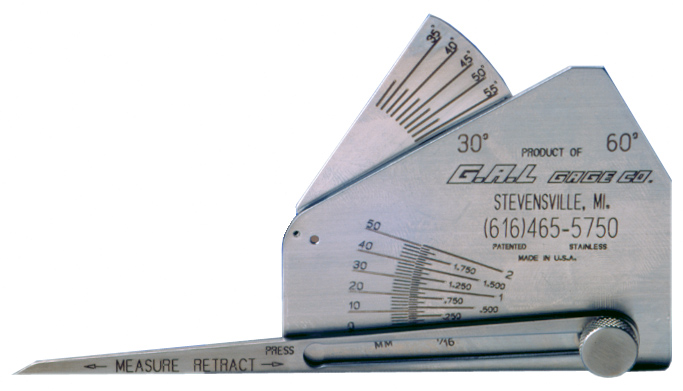The Duty of Gauge Fillet Weld in Structural Integrity: What You Required to Know
The Duty of Gauge Fillet Weld in Structural Integrity: What You Required to Know
Blog Article
The Ultimate Overview to Fillet Weld Quality Assurance: Ensuring Toughness and Resilience in Your Welded Joints
In the realm of welding, making sure the stamina and longevity of fillet welds is critical for the integrity of welded joints. As we get started on this expedition of fillet weld quality control, we will certainly uncover essential variables that influence weld toughness, delve into reliable evaluation methods, and review methods for stopping usual weld problems.
Relevance of Fillet Weld Quality Assurance
Making certain appropriate fillet weld high quality control is extremely important in ensuring the architectural integrity and durability of welded parts in numerous sectors. Fillet welds are generally utilized in architectural steelwork, bridges, stress vessels, pipelines, and other vital infrastructure where the toughness of the weld is vital to overall safety and security and efficiency. Quality assurance steps such as aesthetic inspections, non-destructive testing, and adherence to welding procedures help identify potential issues like lack of blend, insufficient infiltration, undercutting, or excessive support.
Key Factors Affecting Weld Stamina
Achieving optimum weld stamina needs mindful consideration of different essential elements that influence the stability and sturdiness of the bonded joint. The initial important aspect appertains joint prep work, which entails cleansing the base metals to remove any type of pollutants that can damage the weld. In addition, the fit-up of the joint is crucial to make sure proper infiltration and combination of the filler product.
The option of the suitable welding method and parameters additionally plays a substantial duty in identifying weld stamina. Variables such as heat input, traveling speed, and electrode angle can influence the high quality of the weld. Moreover, preserving the appropriate interpass temperature throughout multi-pass welding is important to stop fracturing and ensure a strong bond in between the layers.
Moreover, the choice of filler material and its compatibility with the base metals is essential for attaining high weld toughness. Utilizing filler material with the ideal mechanical buildings can boost the overall integrity of the weld. Post-weld heat therapy and appropriate examination techniques are crucial actions in ensuring the strength and toughness of the welded joint.
Examination Techniques for Weld Honesty

One see post more important examination approach is fluid penetrant screening, where a liquid color is put on the weld surface area - Gauge Fillet Weld. The color seeps right into any type of surface-breaking defects, making them noticeable under UV light. This method works for discovering flaws that may not be visible to the naked eye


Ultrasonic screening is also commonly made use of for inspecting weld stability. High-frequency audio waves are directed into the weld, and any type of disturbances in the acoustic wave pattern suggest possible defects like you can try this out cracks or lack of combination.
These assessment approaches play a vital role in making sure the high quality and integrity of welds, inevitably adding to the overall strength and sturdiness of bonded joints in commercial setups.
Protecting Against Common Weld Defects
In order to maintain the structural integrity of welded joints in industrial applications, it is important to carry out preventative actions to resolve usual weld issues. One usual issue is absence of blend, where the filler product falls short to bond appropriately with the base steels, bring about vulnerable points in the weld. This can be stopped by making certain proper heat control and utilizing the correct welding technique.
One more regular concern is porosity, brought on by gas entrapment in the weld metal during the welding procedure. To avoid this, it is important to clean the base metals completely, use completely dry electrodes, and preserve an appropriate welding environment with proper air flow.
Furthermore, fractures in welds can jeopardize the joint's stamina. To avoid this defect, it is important to control the cooling price after welding, use pre-heating when needed, and select suitable welding criteria.
Enhancing Weld Sturdiness With Proper Methods
One critical method to boost weld resilience is to make certain proper weld grain positioning. By positioning the weld bead properly within the joint, the weld's strength and resistance to tiredness can be significantly enhanced.
Choosing the right filler metal and ensuring the cleanliness of the Learn More base metals can prevent inclusions and other defects that can endanger the weld's durability. By implementing these proper strategies, welders can make certain that their bonded joints show outstanding stamina and toughness, satisfying the greatest quality standards.
Conclusion
Finally, keeping high top quality control requirements for fillet welds is essential for guaranteeing the strength and longevity of bonded joints. By comprehending the key factors influencing weld stamina, utilizing inspection approaches for weld stability, avoiding usual weld flaws, and utilizing proper strategies, welders can improve the overall toughness of their welds. It is crucial to prioritize quality control actions to create lasting and dependable bonded joints.
In the realm of welding, making certain the stamina and durability of fillet welds is extremely important for the stability of bonded joints. As we embark on this expedition of fillet weld quality control, we will certainly uncover crucial elements that affect weld strength, dive into efficient inspection techniques, and discuss methods for preventing typical weld issues.Accomplishing optimum weld strength needs mindful consideration of different key elements that affect the integrity and sturdiness of the bonded joint (Gauge Fillet Weld).In conclusion, preserving high top quality control standards for fillet welds is important for making certain the strength and toughness of bonded joints. By understanding the essential variables affecting weld strength, using examination approaches for weld stability, protecting against usual weld problems, and utilizing appropriate strategies, welders can improve the overall resilience of their welds
Report this page